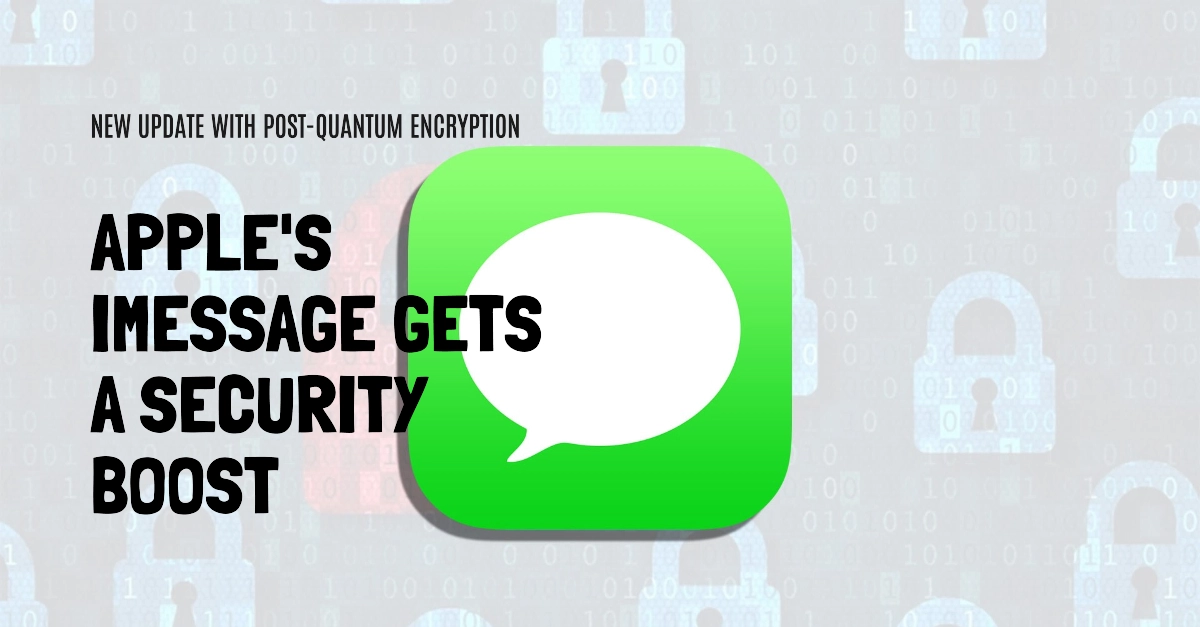Apple continues to place the utmost importance on ensuring the privacy of its users. As quantum computing looms as a potential threat to traditional encryption, Apple has rolled out a ground-breaking new update to iMessage.
This update introduces a cutting-edge post-quantum encryption protocol known as PQ3, designed to safeguard your communications even in an unpredictable future. Unveiled as part of their upcoming iOS 17.4 release, this enhancement offers robust protection for your sensitive iMessage conversations.
In this article, we’ll take you through the core aspects of Apple’s new PQ3 protocol and its implications for the security of your iMessage chats. So, let’s delve into the reasons behind Apple’s decision, how this post-quantum encryption works, and the direct benefits you’ll experience.
What is Post-Quantum Cryptography?
Traditional encryption methods rely on complex mathematical problems that are exceptionally difficult for today’s conventional computers to solve. But the theoretical power of quantum computers poses a future threat, potentially enabling them to decipher today’s encryption algorithms with relative ease.
Post-quantum cryptography introduces entirely new mathematical problems designed to resist even the most advanced quantum computing attacks.
Why Apple Adopted Post-Quantum Encryption
Apple is renowned for its focus on privacy, and introducing the PQ3 protocol demonstrates a proactive commitment to keeping user data out of the wrong hands.
The idea of “harvest now, decrypt later” attacks is a sobering consideration: bad actors could store encrypted data today, waiting for quantum computers to become powerful enough to crack it. Apple’s move ensures that your iMessage chats will remain shielded from these future threats.
How PQ3 Works in iMessage
Apple’s PQ3 protocol is a hybrid system that cleverly combines traditional elliptic curve cryptography with post-quantum algorithms. Here’s a breakdown:
- Initial Key Exchange: When you start a new conversation, iMessage employs traditional elliptic curve cryptography to establish the initial communication keys. This is a well-established, trusted, and efficient method.
- Post-Quantum Security: PQ3 adds a layer of post-quantum protection, specifically using the Kyber algorithm, which was selected by the National Institute of Standards and Technology (NIST) as being secure against quantum attackers.
- Key Rotation (“Ratcheting”): PQ3 employs frequent key rotation (known as “ratcheting”). This ensures that even if one set of keys were compromised, the impact would be limited. New keys are generated regularly to maintain a robust level of security.
Benefits for iMessage Users
Apple’s shift to PQ3 offers these tangible benefits:
- Future-Proof Security: With PQ3 in place, you can rest assured that your iMessage conversations will retain their confidentiality even as quantum computing advances.
- Uncompromised Privacy: Apple maintains a strong stance on user privacy. This update demonstrates their dedication to keeping your data secure, even against potential future hacking technologies.
- Seamless User Experience: The integration of PQ3 into iMessage is designed to be seamless. You won’t need to make any changes or learn new behaviors; your iMessage chats will simply enjoy an elevated level of security.
Overall Thoughts
Apple’s adoption of a post-quantum encryption protocol like PQ3 in iMessage positions the company as a trailblazer in safeguarding consumer privacy.
This update is a testament to Apple’s constant pursuit of innovation in data security, allowing you to communicate with iMessage with even greater peace of mind, now and into the future.
